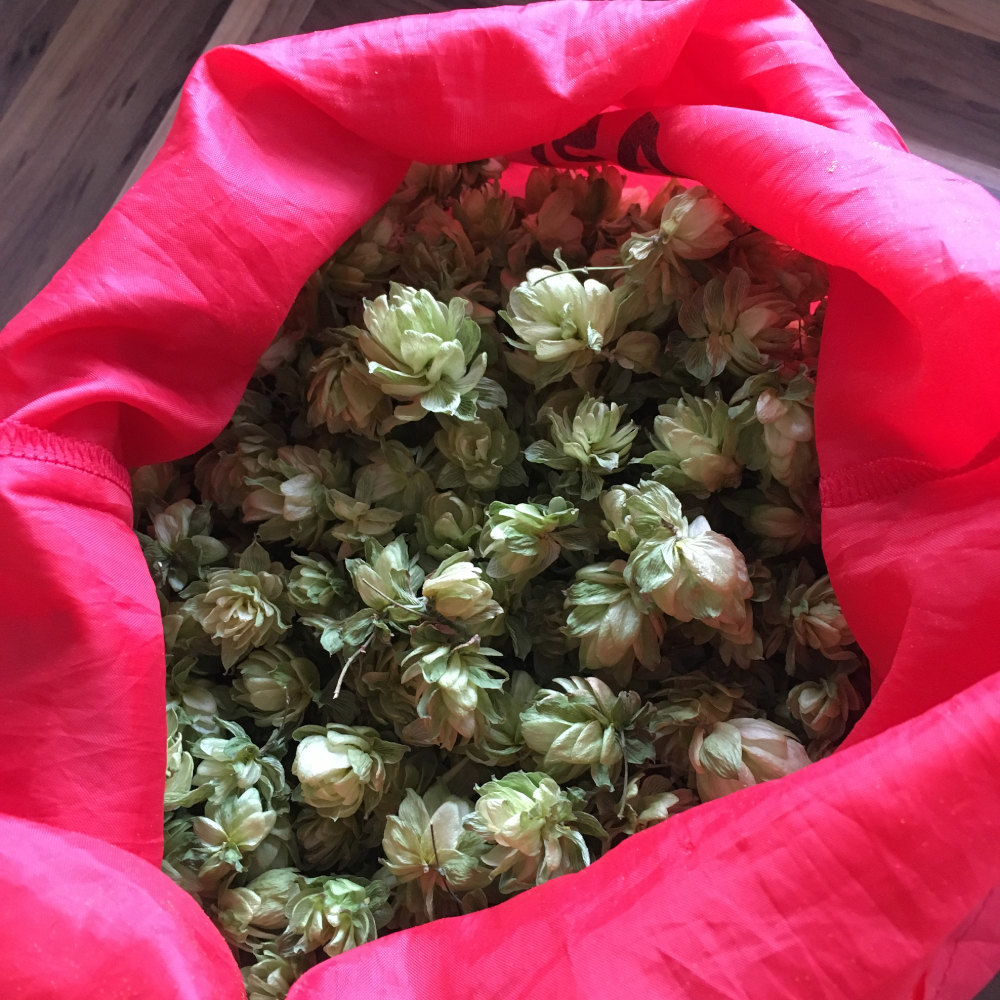Mischbrot Bier – The Baker’s Beer

As I prepared myself for my impending education to become a master baker, I determined that alcohol could be the solution. As the eastern part of Germany and Europe is quite keen on their Mischbrot, a bread made from a mixture of wheat and rye flour, I set out to develop a beer that consisted of a mixture of wheat and rye malt.

As luck would have it, a woman in my tap classes has wild hops growing around her house and no use for them. I have not used anything other than hop pellets before, but was willing to add that to the experiment. I read somewhere online that one should just use the equivalent weight of fresh hops (well, dried, fresh hops) in the recipe. That, however, ends up being a lot of plant material.
For this process, I decided to use the same grain bill for the first four brews, while only varying the yeast. I was curious to determine if the Hefeweizen yeast would perform the best, as one would expect.
Each of the first four brews consisted of one pound of Pilsener, barley malt; one-half pound of wheat malt; and one-half pound of rye malt with the goal of producing four liters of beer. I also attempted to use the same mash schedule and a similar boil. The actual processes were as follows:
| Goal | Make #1 | Make #2 | Make #3 | Make #4 | |
| Dough-In | 15 min @ Cool | 27°C | 25°C | 24°C | 23°C |
| Protein Rest | 30 min @ 50°C | 50°C | 50°C | 52°C | 52°C |
| Beta-Amylose | 45 min @ 68°C | 70°C | 68°C | 70°C | 68°C |
| Alpha-Amylose | 15 min @ 73°C | 73°C | 74°C | 73°C | 73°C |
| Mash-Out | 10 min @ 77°C | 78°C | 78°C | 78°C | 78°C |

Similarly, I had considered maintaining consistency in the hops, but I decided to deviate a bit from brew to brew. I had no idea what the wild hops I was given were, so I used that as a reason to further experiment. Each of the brews also included honey as I was gifted a jar and I felt I needed to start using it somehow. I have never been a big honey consumer. Each of the brews consisted of a 60 minute boil with the following hop schedule:
| Make #1 | Make #2 | Make #3 | Make #4 |
| 0.2 oz unknown hops @ 60 min | 0.2 oz unknown hops @ 60 min | 0.2 oz unknown hops @ 60 min | 0.5 oz unknown hops @ 60 min |
| 0.2 oz Fuggles @ 20 min | 0.2 oz Fuggles @ 20 min | 0.2 oz Tettnang @ 20 min | 0.5 oz unknown hops @ 20 min |
| 2 tsp honey @ 10 min | 2 tsp honey @ 10 min | 2 tsp honey @ 10 min | 2 tsp honey @ 10 min |
| Freeze-dried Hefeweizen yeast | Baker’s yeast | Washed Hefeweizen yeast | Sourdough starter |

Working with rye malt and with fresh hops were both new experiences for me in my brewing career. I made some observations along the way. Using fresh hops theoretically sounds like a great idea, but the amount of plant matter in the pot reduces the space available for the mash. Furthermore, I had hoped that this plant matter would help in filtering from mash tun to fermentation vessel, but it ended up being a nuisance and requiring additional effort to wring out as much green beer as possible; introducing additional risks of contamination. I felt I lost too much valuable wort for the “benefits” of fresh hops.
Working with rye malt sucks. As I was to learn later in the baking academy, the presence of pentosans is a feature of rye grains. These pentosans allow for more water retention in the loafs of rye and Mischbrote, but are also ‘slimy’ when hydrated. This sliminess made filtering a chore. Every time I sparged, I had a stuck mash and lost what little wort I produced to overflows. Brewing should never be that frustrating. I do not recommend using too much rye malt in a brew from a sanity prospective.
Due to the stuck mash and the liquid trapped in the fresh hops, I found myself adding back more water to the fermentation tanks that I normally would. This resulted in some weaker flavor in some of the brews. As one may expect, Make #2, which used normal baker’s yeast, was extremely dull and flavorless. Makes #1 and #3 were great, but the rye malt added no benefit to the flavor. Make #4 was my favorite as had a very sour taste, which I enjoy. One important note is that sourdough takes much longer to fully ferment. I bottled on my normal schedule and each bottle from Make #4 was overly carbonated. I would recommend waiting a couple extra weeks if using sourdough as your yeast.
During my time at the baker’s academy, I was able to make another four versions of this beer; each version had a new combination of grain bill. One had more wheat than rye malt; another the opposite. Makes #5 through #7 continued to use the Hefeweizen yeast. Naturally Make #8 used some sourdough starter from the school. Unfortunately, none of these attempts seemed to be the answer to the perfect Mischbrot beer. (And each of them had sparging problems.)
Regardless, the beer was willingly consumed by the faculty and students with little complaint.


